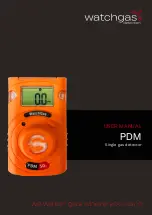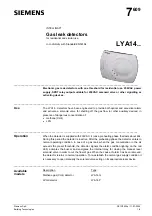
Page 11
for technical questions, please call 1-800-444-3353.
SKU 67378
tips for Searching in Different
environments
There are many factors which
influence the sensitivity and accuracy
of detecting objects, including the
angle, depth, size and oxidation
of the target object. Various soil
or seawater conditions, and also
electromagnetic and electrical
interference surrounding the target
can also affect readings. Other metal
detectors in the area will also cause
interference, so when there is more
than one unit in use, be sure they are
at least 10 yards apart. Some ways to
help increase success are:
If there is interference from similar
1.
metal detectors in your searching
area, lower the SENS setting to stop
the interference.
If there is interference from electrical
2.
cables, TV, radio, or other electrical
devices in your searching area, lower
the SENS setting.
When searching in highly mineralized
3.
areas, the unit may sound even if
there is no metal. Lower the SENS
setting, set the DISC to high and
increase the distance of the Search
Coil from the ground until the false
signal disappears. To set the DISC
setting, place a test metal object
in highly mineralized earth or wet
sand and adjust the setting before
beginning.
When searching in a trash area, set
4.
the DISC to the middle setting so that
the unit can reject most invaluable
metals such as nails, bottle caps,
cans, and small pieces of iron.
Move all metal digging tools when
5.
searching.
The SENS level is generally opposite
6.
the DISC setting. The higher the
sensitivity level is, the worse the
discrimination will be. You can
lower the sensitivity to have better
discrimination.
maintenance anD
SerVicing
Procedures not specifically
explained in this manual
must be performed only by a
qualified technician.
to preVent
SeriouS injurY
from acciDental
operation: turn the power
Switch of the tool off and
remove the batteries from the
tool before performing any
inspection, maintenance, or
cleaning procedures.
Do not use damaged
equipment. have the problem
corrected before further use.
cleaning and maintenance
Before each uSe,
1.
inspect the
general condition of the tool. Check
for loose hardware, misalignment or
binding of parts, cracked or broken
parts, damaged electrical wiring, and
any other condition that may affect its
safe operation.































